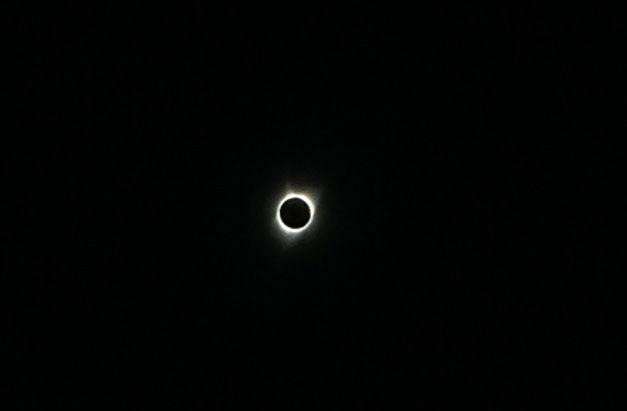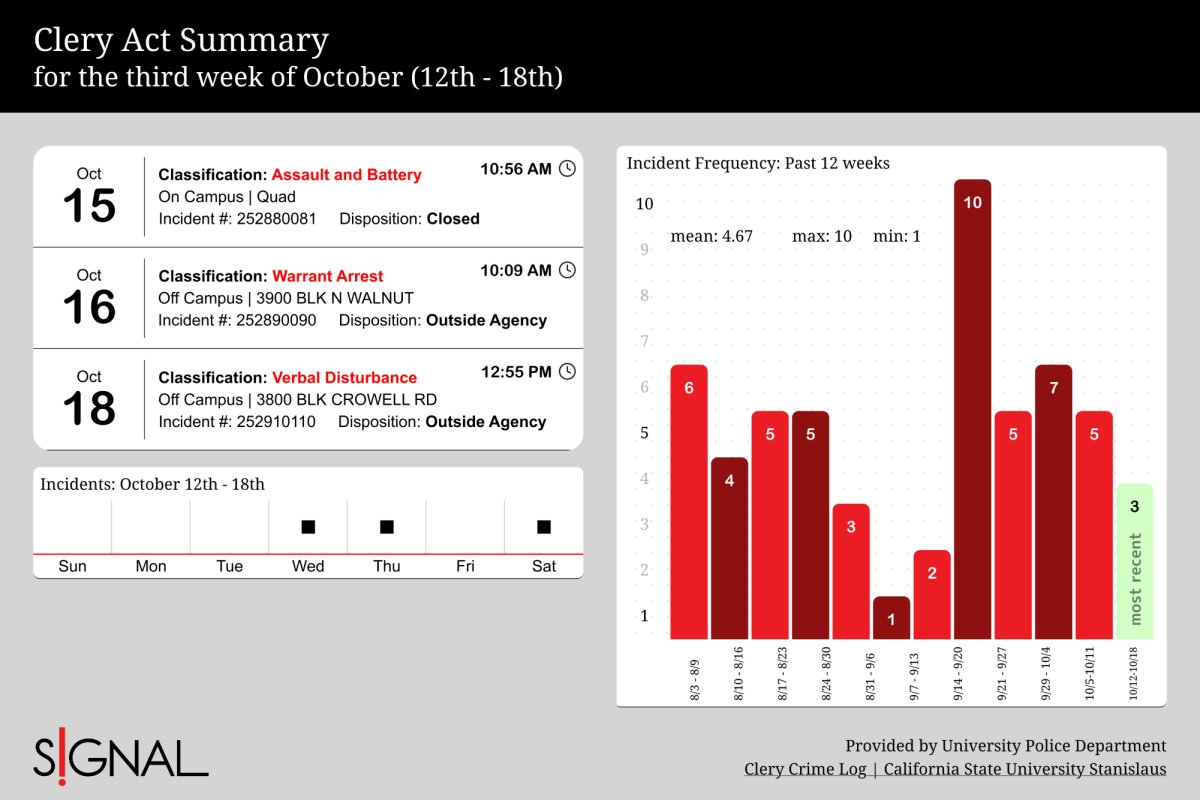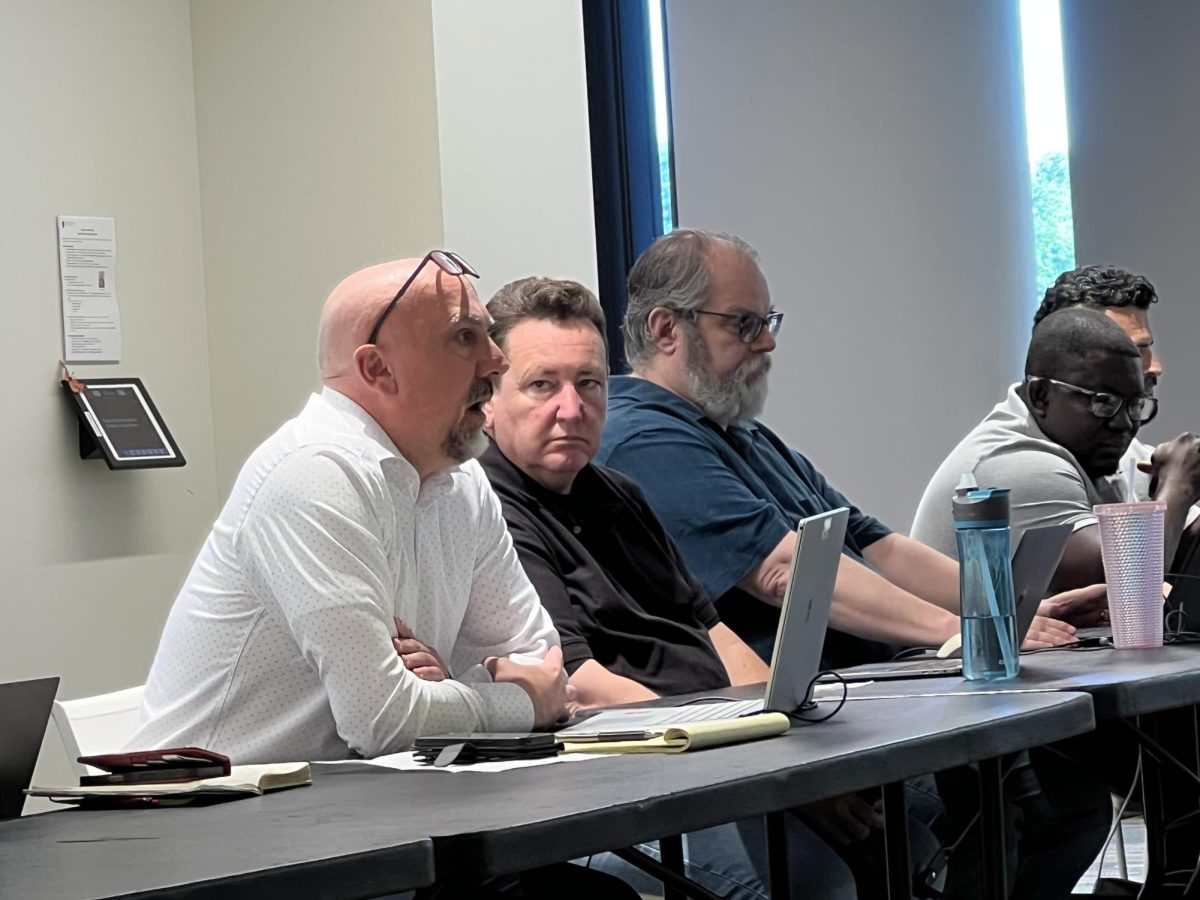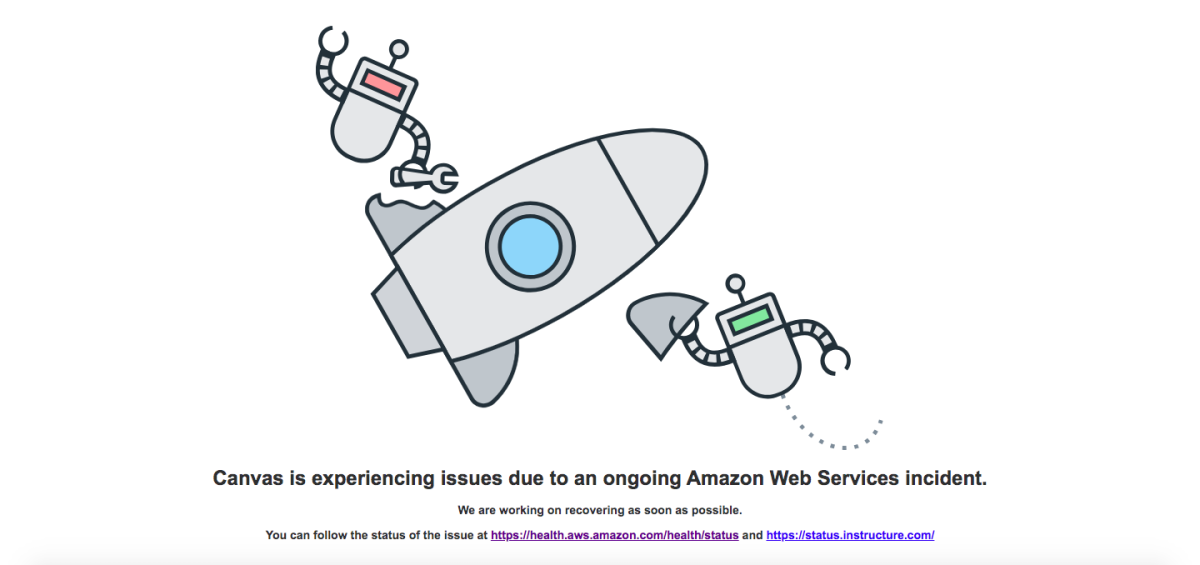Solar eclipses were once believed to be a bad omen: A warning of wrath from the gods, like in Inca legend, or a sign of some supernatural beast devouring the sun, like the black squirrel in Chocktaw tales.
While most cultures no longer regard the eclipse as a herald of impending doom, people from all nations and walks of life still look to the sky during those brief moments when–from our perspective–the sun and moon cross paths.
The celestial spectacle will be visible tomorrow, in various towns and cities in California as the Annular Solar Eclipse makes its way west. Locals in Turlock and the Central Valley will be able to witness the event Saturday, October 14, from roughly 8:00 to 10:45 a.m.
While the Eclipse may not directly pass over these cities, the residents will still have a great view, with maximum coverage hitting roughly 75 percent at 9:20 a.m.
This marks the first major astronomical phenomenon visible in the Central Valley since August’s Blue Supermoon.
“The next blue moon will occur in January 2037,” said Dr. Wing To, a Professor of Physics and Physical Sciences at CSU Stanislaus.
Dr. To called the Blue Supermoon “very special” due to it’s extreme rarity.
However, this year’s Annular Eclipse is even rarer than the Blue Supermoon, since we won’t see another one until 2046–for another 23 years!
Unlike the 2017 Solar Eclipse, the moon will actually be farther from Earth during this event, making it appear smaller.
Because of that, instead of a total blackout, viewers can expect a dazzling “ring of fire” to compliment the otherworldly darkness particular to this cosmic phenomenon.
As a final word of caution, NASA warns astronomy enthusiasts to never look directly at the sun without specialized eye gear. Viewing the eclipse with the naked eye, sunglasses, a telescope, binoculars or any other optical device can cause blindness and other forms of eye damage.
Instead, NASA recommends using specialized “eclipse glasses” or “solar viewers”, which are several times darker than standard-issue sunglasses. They also recommend indirect viewing methods, like a pinhole projector.
“Students should be encouraged to observe eclipses because they are able to apply what they’ve learned in a classroom to a real-world scenario,” said Javier Villanueva, an 8th-grade teacher from Glick Side Middle School.
“Exposing students to wonder, stimulates a lifelong love for learning. It’s wanderlust that students need to constantly encourage them to explore what’s out there!” he continued.
Fans of the spooky season and casual spectators alike, are sure to relish the eerie beauty of the eclipse.
They have a lot more to look forward to, including a series of meteor showers throughout the winter season, starting with the Orionid meteor showers schedueled for October 20th-22nd, and the upcoming Lunar Eclipse on the 28th.
Roberto Montez (Senior/English), a student at CSU Stanislaus, says that he is looking forward to the Lunar Eclipse.
“I think it’ll be tight to see,” said Montez.
Regardless of our race, gender, or different walks of life, the upcoming Annular Eclipse–and the events to follow–are a reminder that we all exist together under the same sky. It is a chance to experience the rare and wondrous events that baffled our ancestors before us. We encourage anyone with safe viewing tools to take a moment and look up to the sky this Saturday.











